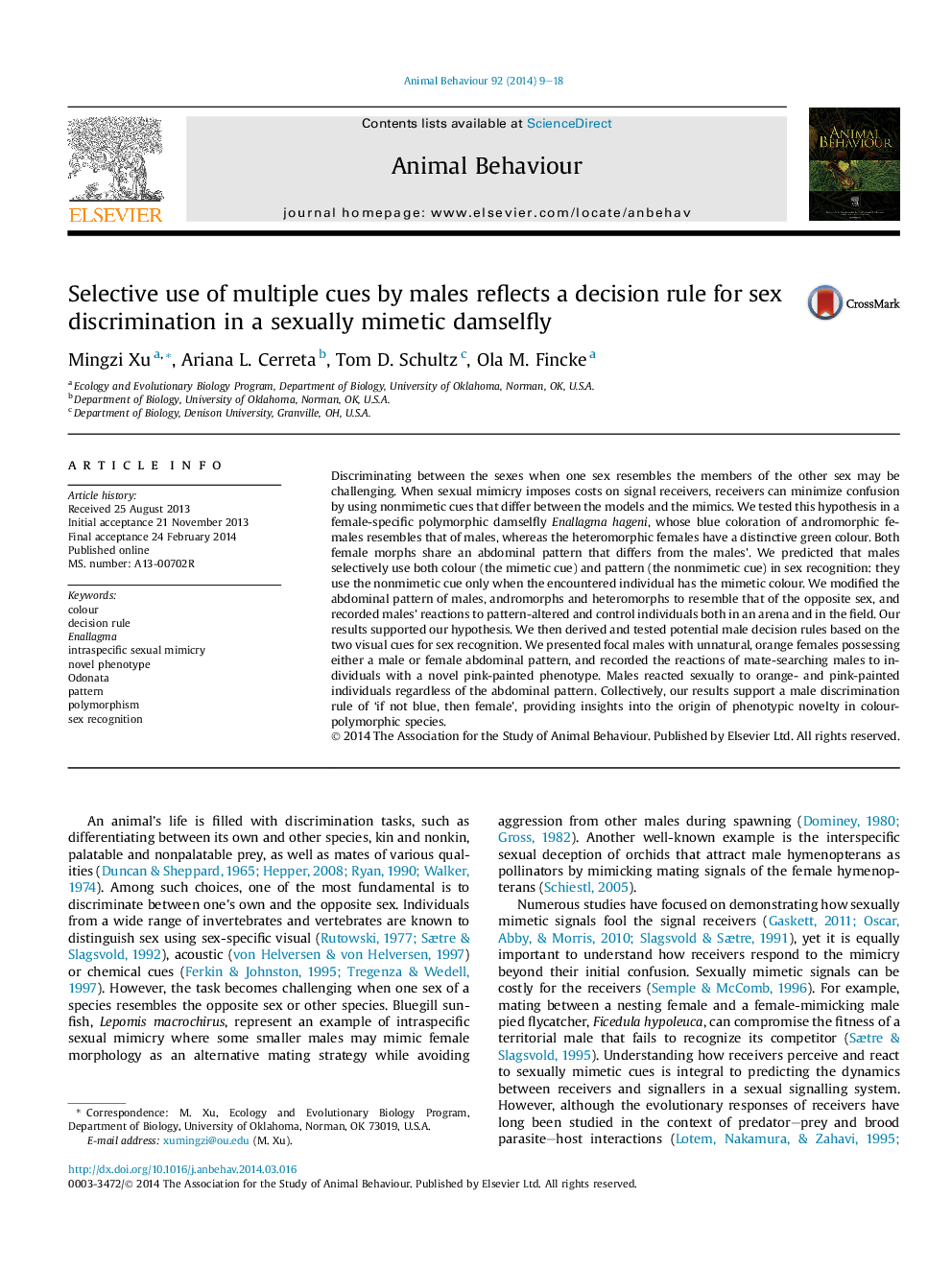| کد مقاله | کد نشریه | سال انتشار | مقاله انگلیسی | نسخه تمام متن |
|---|---|---|---|---|
| 8490508 | 1552236 | 2014 | 10 صفحه PDF | دانلود رایگان |
عنوان انگلیسی مقاله ISI
Selective use of multiple cues by males reflects a decision rule for sex discrimination in a sexually mimetic damselfly
ترجمه فارسی عنوان
استفاده انتخابی از نشانه های چندگانه توسط مردان منعکس کننده یک تصمیم گیری برای تبعیض جنسیتی در یک جنس مذکر می باشد
دانلود مقاله + سفارش ترجمه
دانلود مقاله ISI انگلیسی
رایگان برای ایرانیان
کلمات کلیدی
موضوعات مرتبط
علوم زیستی و بیوفناوری
علوم کشاورزی و بیولوژیک
علوم دامی و جانورشناسی
چکیده انگلیسی
Discriminating between the sexes when one sex resembles the members of the other sex may be challenging. When sexual mimicry imposes costs on signal receivers, receivers can minimize confusion by using nonmimetic cues that differ between the models and the mimics. We tested this hypothesis in a female-specific polymorphic damselfly Enallagma hageni, whose blue coloration of andromorphic females resembles that of males, whereas the heteromorphic females have a distinctive green colour. Both female morphs share an abdominal pattern that differs from the males'. We predicted that males selectively use both colour (the mimetic cue) and pattern (the nonmimetic cue) in sex recognition: they use the nonmimetic cue only when the encountered individual has the mimetic colour. We modified the abdominal pattern of males, andromorphs and heteromorphs to resemble that of the opposite sex, and recorded males' reactions to pattern-altered and control individuals both in an arena and in the field. Our results supported our hypothesis. We then derived and tested potential male decision rules based on the two visual cues for sex recognition. We presented focal males with unnatural, orange females possessing either a male or female abdominal pattern, and recorded the reactions of mate-searching males to individuals with a novel pink-painted phenotype. Males reacted sexually to orange- and pink-painted individuals regardless of the abdominal pattern. Collectively, our results support a male discrimination rule of 'if not blue, then female', providing insights into the origin of phenotypic novelty in colour-polymorphic species.
ناشر
Database: Elsevier - ScienceDirect (ساینس دایرکت)
Journal: Animal Behaviour - Volume 92, June 2014, Pages 9-18
Journal: Animal Behaviour - Volume 92, June 2014, Pages 9-18
نویسندگان
Mingzi Xu, Ariana L. Cerreta, Tom D. Schultz, Ola M. Fincke,
